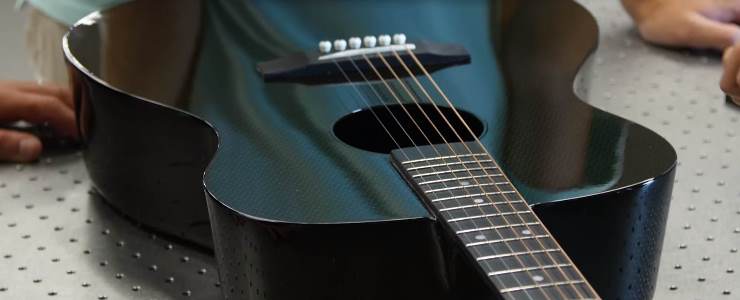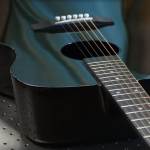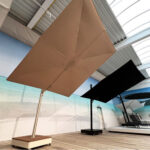University of Queensland engineering students have manufactured an acoustic guitar made entirely from helicopter carbon parts. As part of their final year project, the team of four undergraduate mechanical engineering students designed, implemented, and made the unique guitar from scratch. The guitar materials came from old parts donated by Airbus Helicopters, a business in Eagle Farm that manufactures helicopter parts.
One of the students, Liam Berneville-Claye said the project was challenging. “The idea of working with carbon fibre that came from an attack helicopter was pretty exciting,” he told to a specialised newspaper. “The four of us [in the team] were onboard straight away, and we met with the Dr Luigi Vandi, our supervisor, and once he saw how passionate we were to work with composite material we teed it up.”
The rest is history. It’s taken us 180 hours of manufacturing just to lay it in the mould itself and then you go on to curing it in the oven. The guitar includes 12 layers of carbon fibre built up to create its shape. The whole process tooks many and many hours to be perfect, also because the geometry is complex with the curves and the nature of the guitar, getting the material to flow into the corners was very hard. As well as shaping the body of the guitar, the science behind the sound also kept the team on their toes.
Of the team of four students, only one member came from a musical background. “Interestingly none of us are really musicians,” Mr Berneville-Claye said, “We are more interested in the broader application to complete the project”. “We have picked up a valuable insight into the musician world and what it means to create an instrument from nothing.”
The project has been deemed a success with numerous Brisbane musicians strumming a tune on a carbon guitar. “Everyone who has played it who knows guitars has said that it sounds amazing,” said Mr Berneville-Claye. Queensland Conservatorium of Music student James Patterson said the guitar’s sound was unique. “It is impressive; I have never experienced carbon fibre guitars before, I had heard about them but never played one,” he said. “The sound is a lot brighter, timber guitars generally have a deeper sound.”
This impressive result can open new path to the use of carbon. The future musical instruments could be made by composite materials.












